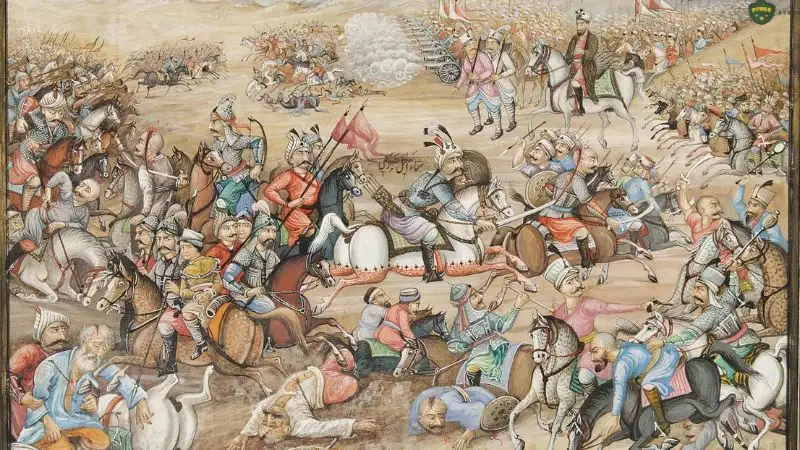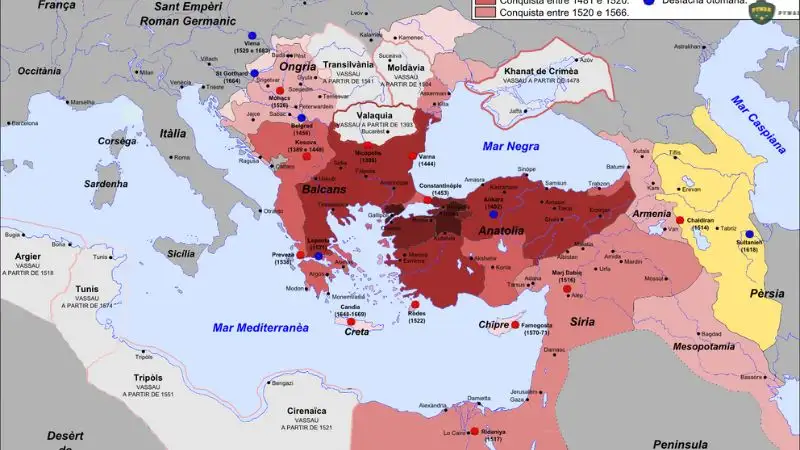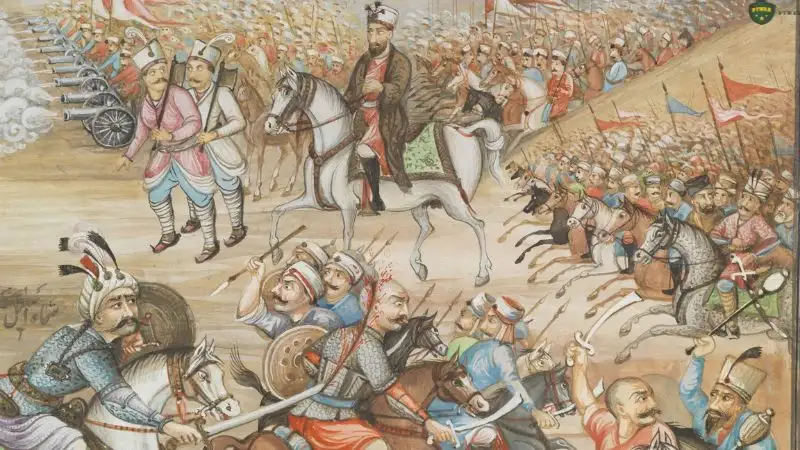The Battle of Chaldiran, fought on August 23, 1514, was a defining moment in the history of the Middle East, pitting the Ottoman Empire against the Safavid Empire in a struggle for regional dominance. This engagement not only shaped the geopolitical boundaries of modern Turkey, Iran, and Iraq but also deepened the Sunni-Shia divide, influencing the cultural and religious landscape of the region. With its decisive outcome and lasting consequences, the Battle of Chaldiran remains a critical study for historians and those interested in the dynamics of early modern empires. This article explores the time, date, location, causes, course, casualties, and outcome of the battle, providing a comprehensive overview for researchers and enthusiasts.
Time and Date of the Battle
The Battle of Chaldiran took place on August 23, 1514, beginning in the early morning and continuing through the day. This single-day engagement, fought under the scorching summer sun, marked a critical point in the escalating rivalry between the Ottoman and Safavid empires. The date is significant, as it coincided with a period of intense military and religious tensions, setting the stage for a confrontation that would influence the region for centuries.

Location of the Battle
The battle was fought on the Chaldiran Plain, located in what is now northwestern Iran, near the village of Gal Ashaqi, approximately 6 kilometers west of Siah Cheshmeh (modern Çaldıran, Turkey), south of Maku, and north of Qarah Zia ol Din. Situated close to the modern border between Turkey and Iran, the plain lies in the rugged Armenian Highlands, characterized by open terrain flanked by hills, which provided strategic vantage points. The proximity to the Safavid capital of Tabriz, about 100 kilometers southeast, made the location critical, as its capture would threaten Safavid control over Azerbaijan and eastern Anatolia. The challenging terrain and logistical difficulties played a significant role in the battle’s dynamics.
Causes of the Conflict
The Battle of Chaldiran was driven by a complex interplay of geopolitical, religious, and military factors, reflecting the ambitions of two rising empires:
- Safavid Expansion and Shia Propagation: The Safavid Empire, established in 1501 by Shah Ismail I, rapidly expanded across Iran, uniting the region under Twelver Shia Islam as its state religion. Ismail’s aggressive promotion of Shia Islam among the Turkic tribes of eastern Anatolia, particularly the Qizilbash, threatened Ottoman control over these regions. The Qizilbash’s loyalty to Ismail as both a political and spiritual leader fueled rebellions, such as the Shahkulu uprising of 1511, which destabilized Ottoman territories.
- Ottoman Imperial Ambitions: Under Sultan Selim I (“the Grim”), the Ottoman Empire sought to secure its eastern borders and expand into Mesopotamia and eastern Anatolia. The Safavid threat, combined with Ismail’s territorial ambitions, prompted Selim to act decisively to suppress Shia influence and secure Sunni dominance. The Ottoman conquest of Constantinople in 1453 had already bolstered their imperial aspirations, and Chaldiran was a critical step in consolidating control over the Silk Road trade routes.
- Religious Divide: The Sunni-Shia schism was a central cause of the conflict. The Ottomans, staunch Sunnis, viewed the Safavids’ Shia ideology as heretical and a direct challenge to their religious authority. Ismail’s forced conversions of Sunnis in Safavid territories, including massacres in Tabriz, further escalated tensions, framing the battle as a religious as well as territorial struggle.
- Geopolitical Rivalry: Both empires vied for control over eastern Anatolia, Mesopotamia, and the Caucasus, regions critical for trade and military dominance. The Safavids’ control of Azerbaijan and their alliances with local Kurdish and Turkic tribes threatened Ottoman security, while Selim’s aggressive expansionism aimed to preempt Safavid advances.
- Immediate Trigger: Selim I, who ascended the throne in 1512 after forcing his father Bayezid II to abdicate, was determined to confront the Safavid threat. His brutal suppression of Shia rebels in Anatolia in 1511–12 and intelligence of Ismail’s army assembling at Chaldiran prompted a preemptive Ottoman campaign.
These factors converged to make a military clash inevitable, as both empires sought to assert dominance over a contested region.
Course of the Battle
The Battle of Chaldiran was a clash between two distinct military systems: the Ottoman army, with its advanced gunpowder technology, and the Safavid army, reliant on traditional cavalry tactics. The battle unfolded as follows:
Prelude and Ottoman Advance
In early 1514, Sultan Selim I mobilized an army estimated at 60,000 to 100,000 troops, including elite Janissaries (infantry armed with muskets), Sipahis (cavalry), and up to 200 heavy cannons and 100 mortars. The Ottoman march through the Armenian Highlands was grueling, exacerbated by Shah Ismail’s scorched earth policy, which destroyed crops and supplies, leaving Selim’s troops hungry and discontented. At one point, Janissaries fired muskets at Selim’s tent in protest. When Selim learned Ismail’s army, numbering 40,000 to 80,000 Qizilbash cavalry, was forming at Chaldiran, he moved swiftly to engage, partly to quell his army’s unrest.
Battle Deployment
On the morning of August 23, 1514, the Ottomans established a strong defensive position on the Chaldiran Plain. Selim positioned his forces on a hill, with Janissaries and artillery behind a wagon-fort of chained carts, a tactic that protected gunners and musketeers. The artillery was placed at the center, flanked by cavalry wings, with irregular infantry as a frontline screen. Shah Ismail, commanding a cavalry-heavy force armed with bows, swords, and maces, lacked artillery, as the Qizilbash viewed firearms as “unmanly.” Despite prior use of firearms in other battles, Ismail chose not to deploy them, possibly due to cultural resistance or lack of European-supplied cannons.

The Engagement
The battle began with a Safavid cavalry charge targeting the Ottoman wings to avoid the central artillery. Ismail personally led the right wing, aiming to outflank the Ottomans and disrupt their formation. Initially, the Safavids gained ground, with Ismail defeating the Ottoman left wing and killing the Beylerbeyi of Rumelia. However, the Ottoman artillery and Janissary musketeers proved decisive. The cannons, highly maneuverable, bombarded the Qizilbash cavalry, causing devastating losses. Iranian sources claim Selim broke a promise not to use artillery, though this may reflect Safavid attempts to explain the defeat. The Safavid left wing collapsed under cannon fire, and Ismail’s forces, lacking infantry or artillery support, were unable to penetrate the Ottoman wagon-fort.
As the day progressed, the Safavids’ undisciplined cavalry charges faltered against the disciplined Ottoman lines. Ismail’s strategy to pressure both Ottoman wings failed, and his army was routed by late afternoon. Ismail himself narrowly escaped capture, but his favorite wife and harem were seized by the Ottomans, a significant blow to his prestige. As the Safavids fled, Georgian light cavalry allied with the Safavids harassed the retreating Ottomans, but this did little to alter the outcome.
Aftermath
Selim’s forces pursued the defeated Safavids, capturing Tabriz on September 6, 1514. However, logistical challenges and the threat of winter prevented a permanent occupation, and the Ottomans withdrew after eight days. The battle shattered Ismail’s aura of invincibility, leading to his withdrawal from military campaigns and a decline in his personal leadership. The Safavids later adopted firearms, with Ismail’s son Tahmasp I integrating cannons into future battles.
Casualties
Precise casualty figures for the Battle of Chaldiran are uncertain due to limited contemporary records, but estimates suggest significant losses:
- Safavid Empire: Approximately 2,000 to 20,000 Qizilbash warriors killed, with some Iranian sources claiming as few as 2,000 and Turkish sources estimating up to 60,000. The high end is likely exaggerated, but the Safavids suffered heavy losses due to Ottoman artillery and muskets. The capture of Ismail’s wife and harem added to the psychological toll.
- Ottoman Empire: Estimates range from 3,000 to 30,000 casualties, with Iranian sources citing 3,000 and some Turkish sources claiming up to 30,000. The Ottomans’ defensive position and technological superiority minimized their losses compared to the Safavids.
The battle’s high casualty rates, particularly for the Safavids, underscored the devastating impact of gunpowder technology against traditional cavalry tactics.
Who Won the Battle of Chaldiran?
The Ottoman Empire, led by Sultan Selim I, decisively won the Battle of Chaldiran. The victory allowed the Ottomans to annex eastern Anatolia and northern Iraq, halting Safavid westward expansion and securing key trade routes. The battle marked the first major Ottoman incursion into Safavid territory, weakening Shah Ismail’s authority and shifting Kurdish tribal allegiances to the Ottomans. While the Safavids later recovered some territories under Shah Abbas the Great, the 1639 Treaty of Zuhab permanently ceded much of the contested regions to the Ottomans. The victory solidified Ottoman dominance in the Middle East and intensified the Sunni-Shia divide.

Conclusion
The Battle of Chaldiran, fought on August 23, 1514, was a watershed moment in Middle Eastern history, shaping the geopolitical and religious landscape of the region. Driven by Safavid expansion, Ottoman ambitions, and the Sunni-Shia divide, the battle saw the Ottomans’ advanced gunpowder technology overwhelm the Safavid cavalry, securing a decisive victory for Sultan Selim I. The clash on the Chaldiran Plain resulted in heavy Safavid losses, estimated at 2,000–20,000, and marked the beginning of a 41-year conflict that ended with the 1555 Treaty of Amasya.
The Ottoman annexation of eastern Anatolia and northern Iraq, coupled with the psychological blow to Shah Ismail, redefined power dynamics and ensured Ottoman dominance for centuries. For historians and students, the Battle of Chaldiran offers critical insights into the role of technology, religion, and strategy in shaping empires, with its legacy still evident in the modern borders and cultural identities of the Middle East.




